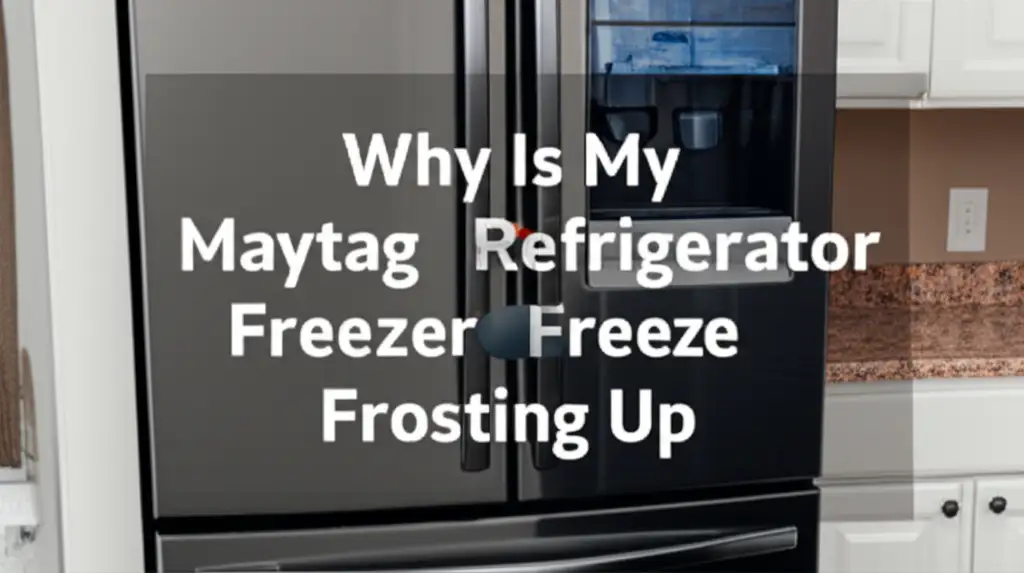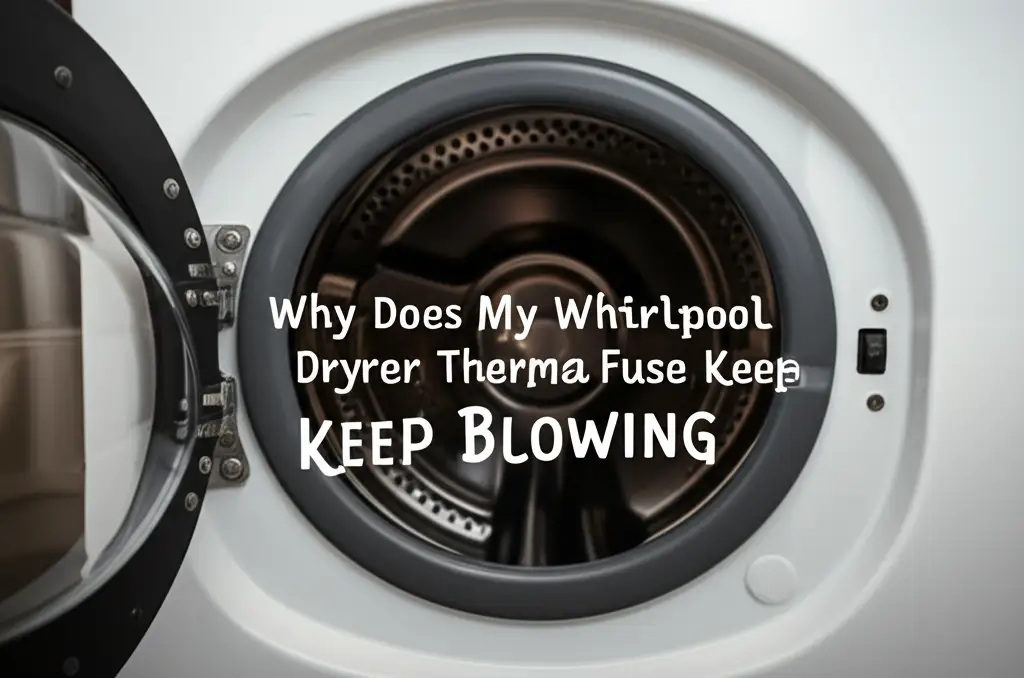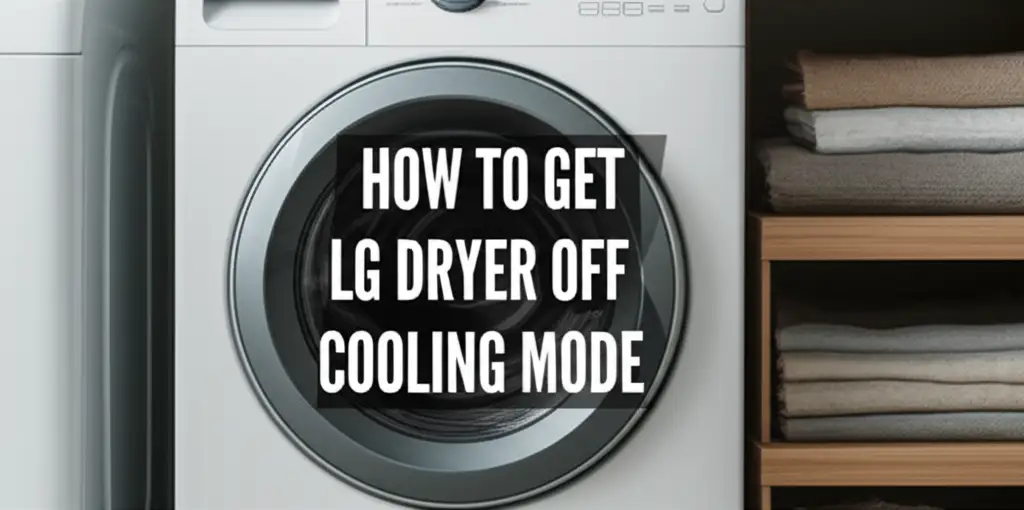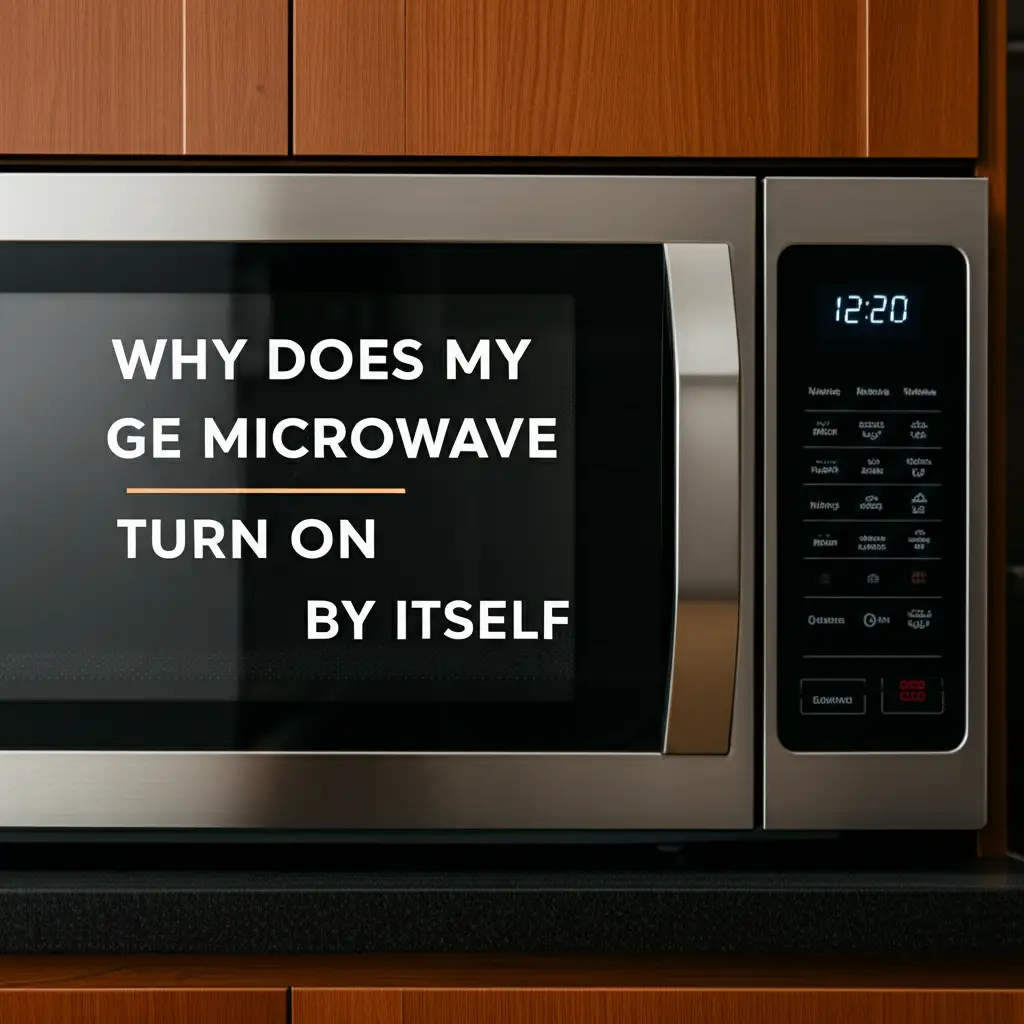· Davia Murnell · Appliance Troubleshooting · 20 min read
Why Does My Whirlpool Refrigerator Have Water In The Bottom
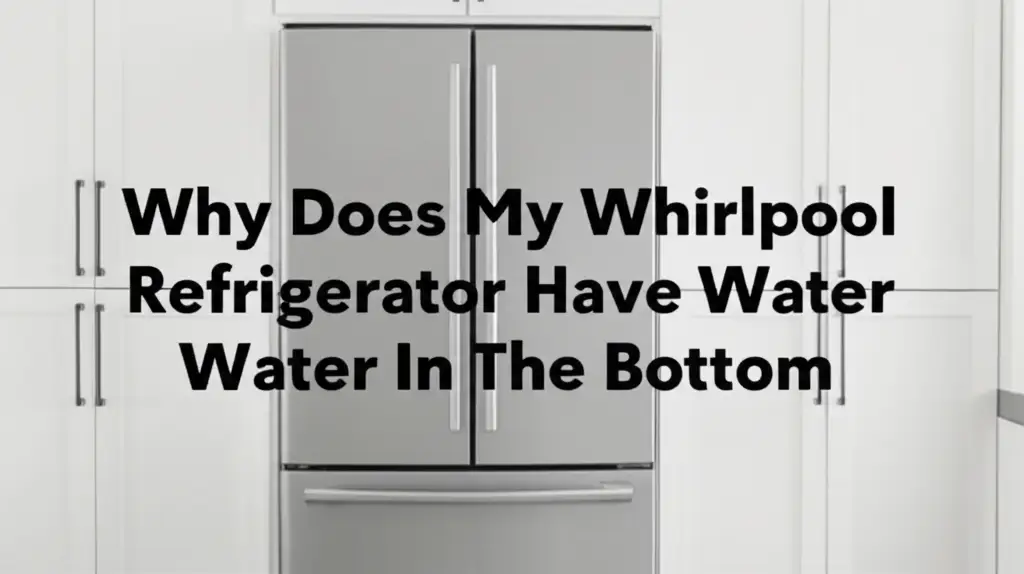
Troubleshooting Your Whirlpool Refrigerator: Why Water Collects in the Bottom
Waking up to a puddle inside your refrigerator is frustrating. You might open your Whirlpool refrigerator door and see water pooled at the bottom. This is not only messy but also a sign of a problem. Water inside your fridge can lead to food spoilage and even mold growth.
It can be concerning to see water gather where your food sits. This issue can stem from various causes, from simple blockages to part malfunctions. Understanding these common reasons helps you find a quick solution. I will explain why your Whirlpool refrigerator has water in the bottom and guide you through easy fixes.
Takeaway
- Check the Defrost Drain: A common cause of water in your Whirlpool refrigerator’s bottom is a clogged defrost drain tube. Clear any ice or debris blocking it.
- Inspect the Drain Pan: Ensure the drain pan is not cracked or overflowing. This component collects defrost water.
- Examine Water Supply Lines: Look for leaks or loose connections on water lines, especially if your fridge has a dispenser.
- Evaluate Door Seals: Damaged door gaskets can let warm air in, causing excessive condensation.
- Assess Ice Maker/Dispenser: Problems with these parts can lead to drips and water collection.
Your Whirlpool refrigerator has water in the bottom often because of a clogged defrost drain tube, a cracked drain pan, a leaking water supply line, or faulty door seals. Each issue causes water to accumulate inside the fresh food compartment, requiring specific troubleshooting and repair steps.
Understanding the Common Culprits: Why Your Whirlpool Refrigerator Has Water in the Bottom
It is a common problem when your Whirlpool refrigerator has water in the bottom. This water can appear as puddles under drawers or on shelves. Many different issues can cause this. I will explain the most frequent reasons for this water collection. Knowing these causes helps you find the right solution.
One primary reason is a clogged defrost drain. Refrigerators periodically defrost their evaporator coils. This process creates meltwater. This water should flow down a drain tube. If this tube gets blocked by ice or food particles, water backs up. It then drips into the fresh food compartment. You might see water in the bottom of your fridge.
Another possible cause is a damaged or overflowing drain pan. The drain pan sits under the refrigerator. It collects water from the defrost drain tube. If this pan cracks, water can leak out. If it fills up too much, it might overflow. This issue leads to water on your floor, but it can also be a sign of a larger water volume issue inside.
Sometimes, the water supply line can be the source. Many Whirlpool refrigerators have ice makers and water dispensers. These features use a water supply line. This line connects to your home’s water system. A loose connection or a crack in this line can cause leaks. Water might then travel along the line. It can end up pooling at the bottom of your fridge. These leaks might be small at first. They grow larger over time.
Faulty door seals also contribute to water issues. The door gaskets keep cold air inside the refrigerator. They also keep warm, humid air out. If these seals are worn, torn, or dirty, warm air enters the fridge. This warm air creates condensation. This condensation can build up. It forms water droplets. These droplets then drip down. They collect at the bottom of your Whirlpool refrigerator.
Lastly, problems with the ice maker or water dispenser themselves can lead to leaks. A malfunctioning ice maker might overfill or freeze incorrectly. This creates excess ice and water. A leaky water dispenser can also drip constantly. Both scenarios can result in water gathering inside the fridge. Identifying the exact source is the first step toward fixing the problem.
Clogged Defrost Drain: A Frequent Cause of Water Accumulation
A clogged defrost drain is a very common reason your Whirlpool refrigerator has water in the bottom. I often see this issue in many refrigerators. When your fridge runs, frost builds up on the evaporator coils. The refrigerator has a defrost cycle that melts this frost. This meltwater then flows into a drain tube. This tube leads to a drain pan located under the fridge.
If this drain tube gets blocked, the water cannot escape. Ice can form inside the tube. Food debris can also fall into the tube opening. This blockage prevents proper drainage. The water then has nowhere to go. It backs up and overflows from the drain trough. This overflow drips directly into the fresh food compartment. You will then notice water collecting at the bottom of your refrigerator.
Fixing a clogged defrost drain usually involves clearing the blockage. First, you need to find the drain opening. This is usually at the back wall inside the freezer compartment. It is often below the evaporator coils. You might need to remove a panel to access it. Use a turkey baster with warm water to flush the drain. This helps melt any ice. A small pipe cleaner or a long, flexible brush can clear debris. Be gentle to avoid damaging the tube.
Sometimes, the clog is further down the tube. You might need to pull the refrigerator away from the wall. Locate the drain tube where it empties into the drain pan. Clear any buildup there. A stiff wire or a specialized drain clearing tool can help push out stubborn clogs. Ensuring this drain is clear is essential. It prevents future water accumulation. This simple fix can save you from bigger problems. For more insights on how water can leak from the bottom of similar models, you might find this article useful: Why Is My Whirlpool Side By Side Refrigerator Leaking Water From The Bottom.
Leaking Water Supply Line: When External Water Enters Your Fridge
A leaking water supply line is another common reason your Whirlpool refrigerator has water in the bottom. This problem is especially true for refrigerators with an ice maker or water dispenser. I have seen many instances where this simple component causes significant water issues. The water supply line brings water from your home’s plumbing system to the refrigerator. It powers the ice maker and water dispenser functions.
This line is usually a thin plastic or copper tube. It connects to a valve on the back of your refrigerator. From there, it runs inside the unit. Over time, these lines can become brittle. They can also get pinched or kinked. The connections can loosen. Even small cracks or loose fittings can lead to a steady drip. This water then follows the contours of the refrigerator. It often ends up pooling at the bottom of the fresh food compartment.
To check for a water supply line leak, first, pull your Whirlpool refrigerator away from the wall. Look at the back of the appliance. Inspect the water line connection point. Feel for dampness or look for visible drips. Follow the line’s path as far as you can see it. Check for any signs of water. If you find a leak, tighten any loose fittings. If the line itself is cracked or damaged, it needs replacement. You can buy replacement lines at appliance parts stores.
Replacing a water supply line usually involves turning off your home’s main water supply. Then, disconnect the old line. Connect the new line securely. Make sure all connections are tight. This prevents future leaks. Even a slow drip can create a lot of water over time. Fixing this quickly saves your flooring and prevents mold. Sometimes, a clogged ice dispenser can lead to excess water that finds its way down; read more about it here: Why Is My Whirlpool Refrigerator Leaking Water From The Ice Dispenser.
Overflowing or Cracked Drain Pan: A Less Obvious Source of Leaks
An overflowing or cracked drain pan can also explain why your Whirlpool refrigerator has water in the bottom. This issue is less visible than others because the drain pan is typically located beneath the refrigerator. I’ve found that many people overlook this part when troubleshooting water problems. The drain pan is designed to catch the water that melts during the defrost cycle. This water drains from the evaporator coils.
Normally, the water in the drain pan evaporates due to the heat from the compressor. This process is very efficient. However, if too much water collects, the pan can overflow. This often happens if the defrost drain line is partially blocked. A partial block lets some water through, but not enough. The pan slowly fills up beyond its capacity. The excess water then spills out. It might collect under the refrigerator. Sometimes it finds its way into the bottom of the fridge compartment.
A crack in the drain pan is another possibility. Plastic parts can become brittle over time. A small crack might develop in the pan. This crack allows water to seep out. You might not see a large puddle right away. Instead, you might notice consistent dampness around the base of your refrigerator. This moisture can wick up and eventually collect inside the unit, particularly in the lower areas.
To inspect the drain pan, you will need to carefully pull your Whirlpool refrigerator away from the wall. You may need to remove the lower back panel of the appliance. The drain pan typically slides out or is accessible from the front or back. Examine the pan for any signs of cracks or damage. If it is cracked, it needs replacement. If it is overflowing, check the defrost drain tube for blockages. Clear any obstructions. Ensure the pan is properly seated after inspection. For general issues where water is leaking out onto the floor, this resource might be helpful: Why Does My Side By Side Refrigerator Leak Water On The Floor.
Faulty Door Seals (Gaskets): The Silent Contributor to Condensation
Faulty door seals, also known as gaskets, are another common reason your Whirlpool refrigerator has water in the bottom. While they do not directly leak water, worn or damaged seals cause excessive condensation. I’ve seen how easily this issue can be overlooked. The door seals play a vital role in keeping your refrigerator efficient. They form an airtight barrier between the inside of the fridge and the ambient room air.
When these seals are not working correctly, warm, humid air from your kitchen can enter the refrigerator. This warm air hits the cold surfaces inside. It immediately condenses into water droplets. Think of a cold glass of water on a hot day; moisture forms on its surface. The same principle applies inside your refrigerator. Over time, these water droplets accumulate. They run down the interior walls. Eventually, they pool at the bottom of the fresh food compartment. This excess moisture can also lead to mold growth and increased energy consumption.
To check your door seals, perform a simple test. Close the refrigerator door on a dollar bill or a piece of paper. Try to pull the paper out. If it slides out easily, the seal is weak at that spot. Repeat this test around the entire perimeter of both the refrigerator and freezer doors. You can also visually inspect the gaskets for cracks, tears, or signs of compression. They should feel pliable and seal firmly.
If you find weak spots or damage, the gasket might need cleaning or replacement. First, try cleaning the seals with warm, soapy water. Food spills and debris can make them sticky or prevent a good seal. If cleaning does not work, or if the gasket is clearly damaged, you will need to replace it. Replacement gaskets are available from appliance parts suppliers. Replacing door seals can significantly improve your refrigerator’s efficiency. It stops unwanted water accumulation. Regular cleaning helps maintain their function. For general cleaning tips that can help prevent many issues, consider reading How To Clean The Refrigerator.
Ice Maker and Water Dispenser Malfunctions: Internal Drips
Malfunctions with the ice maker or water dispenser can also explain why your Whirlpool refrigerator has water in the bottom. These components involve water flow directly within your appliance. I often see cases where these specific features are the culprits. A problem here can lead to internal drips. These drips then accumulate over time. They create puddles in the bottom of your fridge.
An ice maker might have several issues. It could be overfilling the ice tray. This causes excess water to spill out. The water then drips down. It freezes around the ice maker mechanism. Eventually, this ice melts, and water runs down into the fresh food area. Another problem is a cracked ice mold. If the plastic mold that forms ice cubes is damaged, water leaks before it can freeze. This leaked water travels downwards. A faulty water inlet valve for the ice maker can also drip continuously. This constant drip adds to the water collection.
The water dispenser can also be a source of leaks. The dispenser might have a faulty valve. This valve might not close completely after use. It could allow a slow drip. This drip can be hard to notice immediately. Over hours, these small drips add up. The water runs down the inside of the door. It then collects in the bottom of the refrigerator compartment. Sometimes, the water line connection to the dispenser mechanism can also be loose or cracked, causing internal leaks.
To troubleshoot these issues, you might need to temporarily disconnect or turn off the ice maker and water dispenser. Observe if the water accumulation stops. If it does, you have isolated the problem. Check for visible ice buildup around the ice maker. Look for drips from the dispenser nozzle. You might need to replace a faulty water inlet valve or the entire ice maker assembly. Tighten any loose water line connections. These specific repairs usually require careful attention to detail.
Practical Steps to Fix Water in Your Whirlpool Refrigerator
Now that we have covered the common causes, let us discuss practical steps to fix your Whirlpool refrigerator when it has water in the bottom. I recommend taking these actions in a logical order. This approach helps pinpoint the exact problem. It also ensures you resolve the issue efficiently. Most of these steps are DIY-friendly.
Step 1: Clear the Defrost Drain Tube This is often the first place to start.
- Empty your freezer: Remove all food and shelves.
- Locate the drain opening: This is usually at the back of the freezer, near the bottom. It might be under an evaporator cover.
- Melt ice: Use a hairdryer on a low setting or a turkey baster with warm water to melt any visible ice.
- Clear the clog: Gently push a long, flexible brush or pipe cleaner into the drain tube. Wiggle it to dislodge debris.
- Flush the drain: Pour a mixture of warm water and a small amount of baking soda down the tube. This helps clean it.
Step 2: Inspect the Drain Pan The drain pan collects water under the fridge.
- Pull the refrigerator out: Carefully move the appliance away from the wall.
- Locate the drain pan: It is usually at the bottom rear, above the compressor. You might need to remove a metal cover.
- Check for damage: Look for cracks or holes in the pan. If damaged, order a replacement.
- Empty and clean: If full but not cracked, empty the water. Clean any slime or debris. Ensure the defrost drain tube is correctly positioned over the pan.
Step 3: Examine the Water Supply Line This step is for refrigerators with ice makers or dispensers.
- Turn off water supply: Locate the shut-off valve for your refrigerator’s water line. Turn it off.
- Inspect connections: Check the connection at the wall and at the back of the refrigerator. Tighten any loose fittings with a wrench.
- Look for damage: Follow the line from the wall to the fridge. Look for kinks, cracks, or punctures.
- Replace if damaged: If the line is damaged, replace the entire section. Use a compatible replacement hose.
Step 4: Assess Door Gaskets (Seals) Damaged seals allow warm air in, creating condensation.
- Clean the seals: Use mild soap and water to clean the entire gasket. Food debris can prevent a good seal.
- Perform the dollar bill test: Close the door on a dollar bill. If it pulls out easily, the seal is weak. Test all around the door.
- Check for tears/cracks: Visually inspect the gaskets for any visible damage.
- Replace if necessary: If the seals are torn, cracked, or severely hardened, they need replacement. This is a fairly straightforward repair.
Step 5: Check Ice Maker/Water Dispenser These components can drip internally.
- Observe for drips: Watch the ice maker and water dispenser for any constant dripping.
- Ice Maker: Look for ice buildup around the ice maker or inside the ice bucket. This can indicate overfilling or a leak.
- Water Dispenser: Check the dispenser nozzle for slow leaks after use.
- Isolate the issue: If possible, turn off the ice maker or water supply to the dispenser temporarily. See if the water in the bottom stops accumulating.
- Consult manual: If you suspect an internal ice maker or dispenser problem, consult your Whirlpool user manual for specific troubleshooting steps or consider professional help. Sometimes, simply knowing how to prevent water or ice dispensing issues can save you trouble, for instance: Why Is My Whirlpool Refrigerator Not Dispensing Water Or Ice.
Prevention and Maintenance to Avoid Future Leaks
Preventing your Whirlpool refrigerator from having water in the bottom is simpler than fixing a leak. Regular maintenance plays a key role. I encourage proactive steps to keep your appliance running smoothly. These actions help avoid those frustrating puddles.
One crucial preventive measure involves keeping the defrost drain tube clear. I recommend doing this a few times a year. You can pour a solution of warm water mixed with a small amount of bleach or baking soda down the drain. This helps prevent algae and mold growth. These growths can cause blockages over time. A clear drain means meltwater flows freely. It will not back up into your fridge compartment.
Regularly cleaning the refrigerator interior also helps. Spilled food or crumbs can find their way into the defrost drain opening. This leads to clogs. Wipe down shelves and drawers. Pay attention to the back wall of the fridge. Remove any debris. This simple cleaning habit makes a big difference. It ensures food particles do not block the drain.
Inspecting door seals is another important task. Make it a routine to check them every few months. Look for any signs of wear, tears, or hardening. Clean the seals with mild soap and water. Dirt and food residue can reduce their effectiveness. If seals are damaged, replace them promptly. Good seals mean warm air stays out. This reduces condensation buildup. Less condensation means less water to drip to the bottom.
If your Whirlpool refrigerator has an ice maker or water dispenser, be mindful of its performance. Listen for unusual noises. Check for constant dripping from the dispenser. Inspect the ice maker for excessive ice buildup around the mechanism. Address any signs of malfunction quickly. Small drips can become big puddles if ignored. This can prevent issues that cause water or ice problems.
Finally, ensure your refrigerator is level. An unlevel refrigerator can affect how water drains. It can also cause the door seals to not close properly. Use a spirit level to check if the unit is balanced. Adjust the leveling feet as needed. Proper leveling helps all internal systems function as designed. By following these maintenance tips, you can significantly reduce the chances of finding water in the bottom of your Whirlpool refrigerator. Keeping your refrigerator clean and well-maintained is key to its longevity. You can find more comprehensive cleaning guides if you need them: How To Clean The Refrigerator.
When to Call a Professional: Knowing Your Limits
While many Whirlpool refrigerator water issues are fixable yourself, knowing when to call a professional is important. I always advise people to assess their comfort level with repairs. Some problems are more complex. They might require specialized tools or diagnostic skills. Attempting a repair beyond your capabilities could cause more damage.
You should consider calling an appliance technician if you cannot locate the source of the water. Sometimes, the leak is hidden deep within the refrigerator’s internal components. An experienced technician has specialized equipment. They can diagnose hidden leaks. They can also identify complex issues that are not immediately obvious.
Another reason to call a professional is if the problem persists after your attempts to fix it. You might have cleared the defrost drain. You might have checked the drain pan and water lines. But water still collects in the bottom. This indicates a deeper problem. It could be a faulty valve, a refrigerant leak, or a problem with the defrost system’s electronics. These issues often require professional expertise.
If you need to replace a major component, professional help might be best. This includes parts like the main water inlet valve, evaporator coil, or complex electronic control boards. These replacements involve working with electrical components or refrigerant lines. Such tasks carry risks if not performed correctly. Appliance technicians are trained for these specific repairs. They have the right tools.
Finally, if you are unsure about any step, call for help. Safety should be your top priority. Working with appliances involves electricity and sometimes water. If you feel uncomfortable, or if the repair seems too difficult, do not hesitate. A professional can diagnose and fix the issue safely and effectively. They ensure your Whirlpool refrigerator runs properly again. This decision can save you time, effort, and potential future repair costs.
FAQ Section
Q1: How do I stop water from pooling in my Whirlpool refrigerator? A1: To stop water pooling, first check the defrost drain tube for clogs. Use warm water or a pipe cleaner to clear it. Next, inspect the drain pan under the fridge for cracks or overflows. Also, examine the water supply line and door seals for leaks or damage. Addressing these common issues often resolves the problem.
Q2: Can a clogged drain cause water in the bottom of the fridge? A2: Yes, a clogged defrost drain is a primary cause of water in the bottom of your fridge. When ice or food debris blocks the drain tube, meltwater from the defrost cycle cannot escape. This water then backs up and overflows into the fresh food compartment, forming puddles.
Q3: Is it safe to use a Whirlpool refrigerator with water in the bottom? A3: Using a refrigerator with water in the bottom is not ideal. It can lead to food contamination, mold growth, and potential electrical hazards if water reaches wiring. You should address the issue promptly to maintain food safety and prevent further damage to the appliance.
Q4: How often should I clean my refrigerator’s drain hole? A4: You should clean your refrigerator’s drain hole at least once or twice a year as a preventive measure. If you regularly experience water accumulation or notice slow draining, increasing the frequency of cleaning to every few months can help prevent future clogs.
Q5: Can a bad door seal cause water inside my refrigerator? A5: Yes, a bad door seal can cause water inside your refrigerator. Worn or damaged seals let warm, humid air enter the appliance. This warm air condenses on the cold interior surfaces, forming excessive moisture and water droplets that collect at the bottom.
Q6: What do I do if my Whirlpool refrigerator’s drain pan is cracked? A6: If your Whirlpool refrigerator’s drain pan is cracked, you need to replace it. A cracked pan cannot hold the defrost water, leading to leaks. You can typically order a new drain pan from Whirlpool parts suppliers. Ensure the new pan fits your specific refrigerator model for a proper fix.
Conclusion
Finding water in the bottom of your Whirlpool refrigerator can be alarming, but it is often a problem with a straightforward solution. I have walked you through the most common culprits. These include a clogged defrost drain, a leaking water supply line, a damaged drain pan, faulty door seals, and issues with the ice maker or water dispenser. Each of these can lead to the unwelcome sight of water accumulating where your food is stored.
Taking the time to diagnose and fix these issues quickly is important. Clearing a blocked drain tube or replacing a worn door gasket can restore your appliance’s efficiency. It also prevents potential damage to your home and food spoilage. Remember, regular maintenance is key to preventing future problems.


